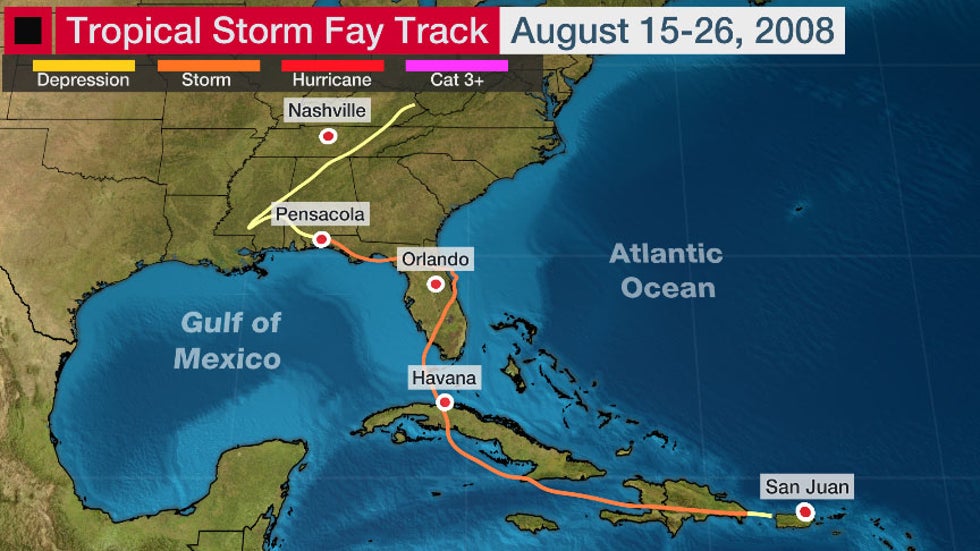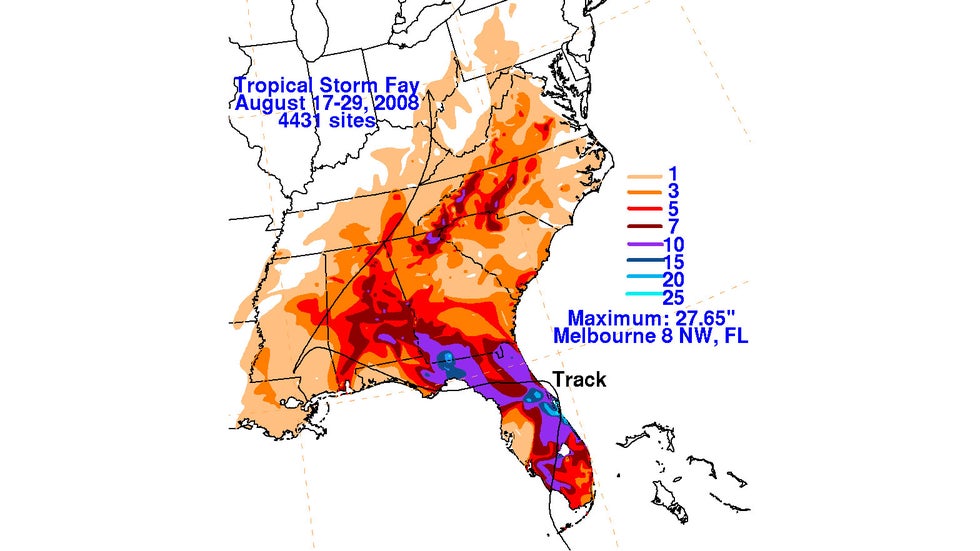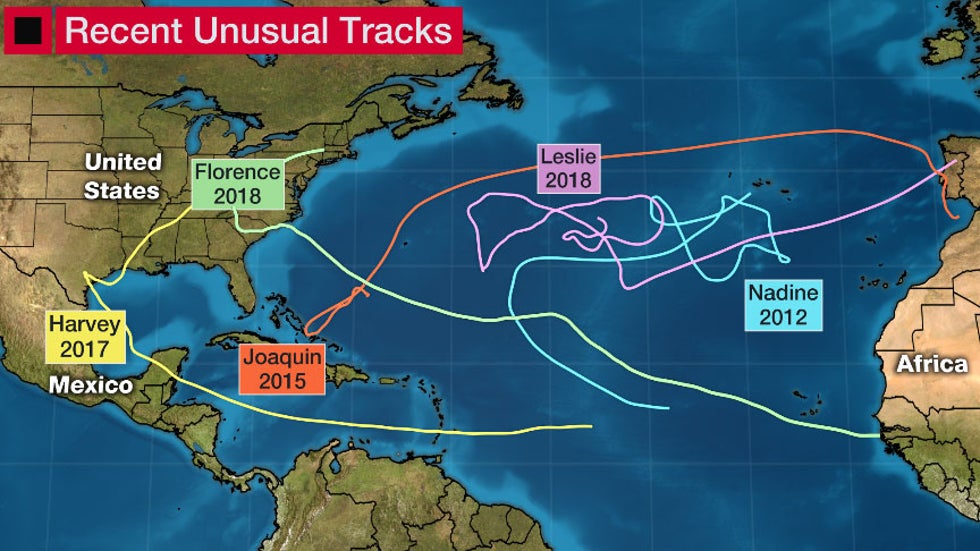 Track of Tropical Storm Fay in 2008.
Track of Tropical Storm Fay in 2008.The next named storm in the Atlantic will be Fay, the same name as a tropical storm that took a bizarre path 12 years ago, making four landfalls in Florida in six days.
(MORE: Atlantic Hurricane Season Isn't Off to as Busy a Start as It Seems)
Tropical Storm Fay was named on Aug. 15, 2008, near Puerto Rico. It tracked westward across Hispaniola and parts of Cuba, making one landfall in the Dominican Republic, one in Haiti and two in Cuba. Fay then moved into the Florida Straits and passed over Key West, its first Florida landfall.
Fay made its second Florida landfall between Cape Romano and Everglades City early Aug. 19 with maximum sustained winds of 65 mph. Fay briefly strengthened slightly while it was over South Florida and developed a well-defined eye feature.
It then emerged over the Atlantic off the east-central Florida coast on Aug. 20 and turned northward, moving at less than 5 mph. This slow movement allowed heavy rainfall to drench portions of Florida, and about 25 inches of rain was reported near Cape Canaveral.
An upper-level ridge to the north of Fay expanded westward, causing the tropical storm to turn to the west on Aug. 21. This westward turn resulted in its third Florida landfall near Flagler Beach. Fay continued its westward track across northern Florida and moved into the northeastern Gulf of Mexico.
Fay made its final landfall in the Florida Panhandle near Carrabelle on Aug. 23. Fay took an erratic track through the South as a tropical depression before it finally merged with a frontal system over eastern Kentucky.
Heavy rainfall was the biggest impact from Fay, with devastating flooding reported in Hispaniola, Cuba and Florida. Numerous totals of over 10 inches were reported and both Melbourne, Florida, and Thomasville, Georgia, measured over 27.5 inches of rainfall due to Fay.
 Rainfall from Tropical Storm Fay.
Rainfall from Tropical Storm Fay.In addition to the flooding rain, a total of 81 tornadoes developed across Florida, Georgia, Alabama and the Carolinas as Fay moved through the region. Thirteen deaths were directly attributed to the tropical storm in Florida, the Dominican Republic and Haiti.
Other Recent Strange Tropical Tracks
Fay is not the only tropical cyclone to take a strange path in recent years. Many tropical systems take a path westward across the Atlantic and then turn northward around the Bermuda-Azores high. However, when the steering flow in the atmosphere is weak or changes, it can result in unusual tracks.
These weird tracks can include making at least one loop, reversing course and/or looking like a toddler's scribbles.
A few examples over the past 10 years are plotted on the graphic below. Hurricane Harvey in 2017 was a memorable storm that meandered near the Texas coast and reemerged in the Gulf of Mexico. Harvey brought historic flooding to Texas.
Hurricane Florence in 2018 was another flood disaster due to its unusual path. Florence tracked far enough north as it crossed the Atlantic that every other storm that tracked near its location on Sept. 7 did not make landfall in the United States.
Florence, however, made landfall in North Carolina. The hurricane's forward speed slowed significantly near the Carolinas and it changed direction, moving west-southwestward into South Carolina.
Hurricane Joaquin is an example of a tropical cyclone that made a loop. In this case, it was near the central Bahamas, which were hit hard by the Category 4 hurricane.
Hurricanes Nadine in 2012 and Leslie in 2018 took bizarre paths in the Atlantic Ocean that look more like chaotic, squiggly paths than a traditional tropical cyclone track.
 A few strange tracks over the past 10 years.
A few strange tracks over the past 10 years.The Weather Company’s primary journalistic mission is to report on breaking weather news, the environment and the importance of science to our lives. This story does not necessarily represent the position of our parent company, IBM.
The Weather Company’s primary journalistic mission is to report on breaking weather news, the environment and the importance of science to our lives. This story does not necessarily represent the position of our parent company, IBM.

No comments:
Post a Comment